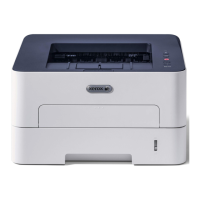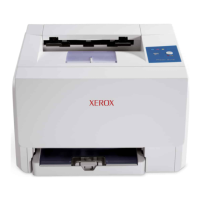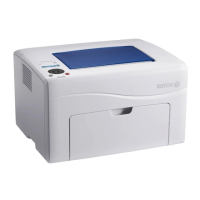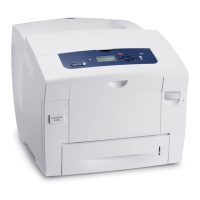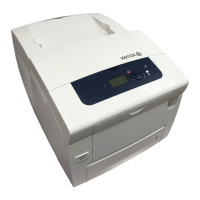5.
OPERATIONAL
CONTROL
EXTERNAL
CONTROL
SUBSYSTEM
The External Control Subsystem (ECS)isa group of elements
used in this computer system
that
provide operational and
diagnostic interfaces
to
control and maintain system
hard-
ware and software.
CENTRALIZED
SYSTEM
CONTROL
In many other computer systems
II
software-level
II
operator
interactions
are
transacted through
an
operator's
teletype-
writer console whi Ie hardware level interactions
are
per-
formed through a fixed panel of lamps and switches. In
contrast, this Xerox computer system consolidates these
in-
teractions and controls into a console telecommunications
device,
designated as the System Control Console (SCC).
Through
the
SCC,
the
operator has a single control
point
for
all
normal system control
activities.
A Remote Diagnostic
Interface
(RDI)
permits
the
local
System Control Consol e to be augmented
wi
th a Remote
Console
that
may have
the
same
degree
of system
con-
trol. (Usage of the
RDI
and
Remote Console as a Remote
Assist
feature
is described below, under
II
Remote Console".)
A System Control Panel (SCP) contains indicators
and
basic
controls
that
the operator may use during system startup or
to
establ ish connections with
the
remote location.
CONTROL
CONSOLE
DEVICES
The
ECS
provides
an
interface
for two
local
(primary and
alternate)
communications consoles and a
data
set
inter-
face
for remote diagnostic
connection.
Each communi-
cations
console must have
an
EIA
RS232
voltage
interface
and
format
characters
in
even
parity ASCII
code
with
con-
trol protocols of a Model 4691
KSR
35 Keyboard/Printer.
Allowed communications rates
are
10
and
30
characters
per
second.
PRIMARY
CONSOLE
The primary console always has
the
functional
capability
of
the
System Control Console
to
communicate with software
through
I/O
subchannel address
X'Ol'.
The communications
rate
of
the
primary console is
either
120
characters
per
second or the same as
the
alternate
and
remote consoles
depending on the setting of
the
FSELA
switch on
the
Con-
figuration Control Panel (see Chapter 6).
If
the
REMOTE
CHANNEL switch on
the
System Control Panel is in
the
SCC position (implying a remote diagnostic
connection),
the remote channel frequency
is
automatically
enforced on
the primary console.
REMOTE
CHANNEL
The
alternate
and
remote consoles share
the
same
data
paths.
Both
consoles
receive
the same output;
either
one of
the
consoles is
selected
for input
by
the
ALTSEL
switch on
the
Configuration Control Panel. The communications rates
of
10
or 30
characters
per second
are
selected
for both
con-
soles by
the
FSELBO
and
FSELB
1 switches on the
Configu-
ration
Control Panel. Both consoles may function
either
strictly
as
I/O
devices
or
as
parallel
System Control
Con-
soles
selected
by
the
REMOTE
CHANNEL switch on
the
System Control Panel. Description of communications
rate
selection
is found in Chapter 6.
ALTERNATE
CONSOLE
The
alternate
console normally functions as
an
output
de-
vice
residing
at
I/O
subchannel address
X'OB'.
This
con-
sole
can
create
an
edited
system log,
while
the
operator's
c'onsole functions
at
a higher communications
rate.
(RE-
MOTE
CHANNEL
and
ALTSEL
switches
are
both
OFF.)
If
the
primary console fails, the
alternate
console may
function as
the
System Control Console. In this
case,
the
remote console
connection
is only inhibited by
the
op-
erator
at
the
data
set.
(REMOTE
CHANNEL switch in
SCC position;
ALTSEL
switch in
ON
position.)
Before
the
remote
device
can
gain
access
to
the Remote
Diagnostic
Interface
(RDI),
the
operator must manually
in-
tervene
to
establish
the
connection
at
the
data
set and
the
System Control Panel. The
data
set
(Bell 103A or
equiva-
lent)
connection
is
inhibited
while the
REMOTE
CHANNEL
switch is in
the
OFF position.
The remote console may run
on-line
diagnostics
while
the
rest of the system performs
non-maintenance
work. In this
case,
the
remote console preempts
I/O
subchannel
X'OB'
and
the
alternate
(local) console
creates
a log of
the
on-
line
mainentance
if
not turned off. The remote
device
does not have
access
to
the SCC hardware controls, but
may
enter
software-level control information through
the
I/O
system
(REMOTE
CHANNEL switch in
I/o
position,
ALTSEL
switch in OFF position).
If
the
entire
system is under
the
discretionary control of
re-
mote
maintenance
personnel, the operator may
connect
the
remote console
to
the
RDI
as
the
System Control Console.
The remote console is then
connected
logically
in
parallel,
and
assumes
all
the
functional
capability
of
the
primary
con-
sole,
and shares
I/O
subchannel
X'Oll.
(Note
that
con-
ventions must
be
established to ensure
that
the
primary
and
remote consoles do not
generate
overlapping
input.)
The
remote console communications
rate
is
automatically
im-
posed on the primary console and the operator may
have
to
Operational
Control 135
